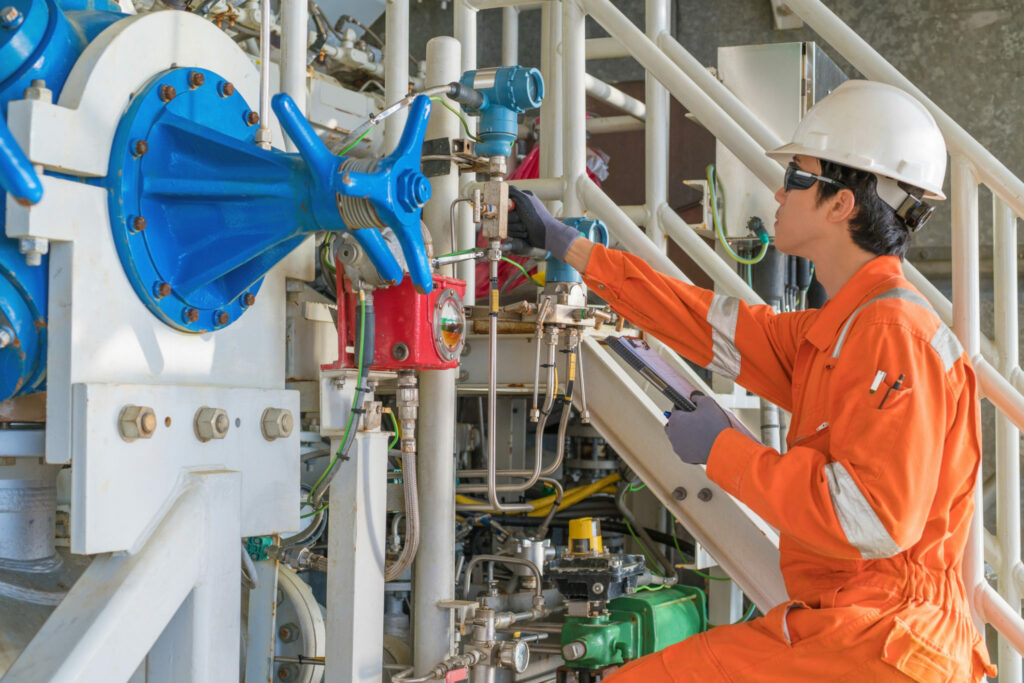Rotary vane compressors, AKA sliding vane compressors, are one of the positive displacement compressors and are used in a wide range of industries. They have been around for quite a while now since their invention in the late 19th century, and maybe this is one of the reasons they are so common. These types of compressors take advantage of centrifugal force to compress air, and this has become possible by a creative yet simple design that will be discussed in the following.
Now, you might wonder if rotary vane compressors are the type of air compressors you need for your specific application. Well, we at Linquip are here for you to not only find the product you need in here with an ease of mind, but also make sure you are considering all the important aspects of your choice. So, find out if rotary vane compressors are the best choice for you.
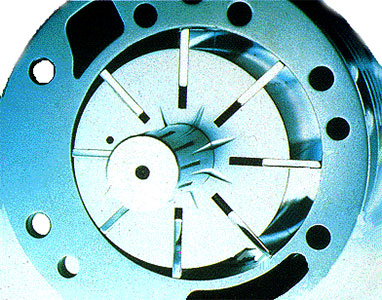
Also for an overview of all air compressor types, see our post here.
Structure of Rotary Vane Compressors
As can be deduced from the name, rotary vane compressors have a rotor. The cylindrical rotor is placed eccentrically in a casing and has a drum in the center. The air enters and then exits the casing through the inlet and outlet ports. The drum takes the air the smallest space at the outlet port and takes it takes it to a bigger one at the inlet port.
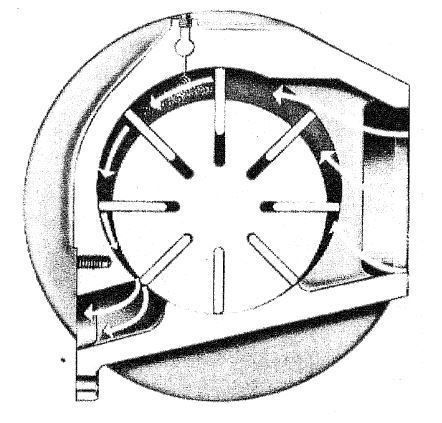
There are several radial slots in the rotor with spring-loaded vanes fitted to them. The purpose of the springs is to ensure contact between the vanes and the housing at all times. As the rotor rotates, some vanes are compressed and some are extended. It is also usually the case that the inlet port is larger than the outlet port.
Working Principle
As already mentioned, the rotor is placed eccentrically in a way that the drum is closest to the housing at the outlet port and farthest from it at the inlet port. Now, each two adjacent vanes form a space enclosed by them and the corresponding sections of the drum and the housing. Therefore, the air trapped between two adjacent vanes at the inlet port undergoes a compression due to the shrinking space as the rotor moves about the its axis of rotation until it reaches to the outlet port.
In order to keep the air from escaping its space between adjacent vanes, there might be some oil-lubrication for the compressor that also plays the role of sealing. A thin layer of oil will seal the space between the vanes and the housing. Of course, oil-free designs are also available. Nonetheless, the core idea is to have some elastic mechanical component such as springs connected between the vanes and the drum that will keep pushing the vanes against the housing to ensure no or minimal air leakage between each two adjacent vanes.
It might have already crossed your mind that the pressure ratio for rotary vane compressors is dependent on the number of vanes. The more vanes a sliding vane compressor has, the higher its pressure ratio is going to be. You could expect a typical value of 5:1 for the pressure ratio of single-stage rotary vane compressors, and a value of up to 8:1 the high-pressure models. The number of vanes, therefore, varies from something like 20 to 30 according to how much pressure rise is demanded from the design. These compressors are usually used for capacities of up to 150 psig (1,034 kPag).
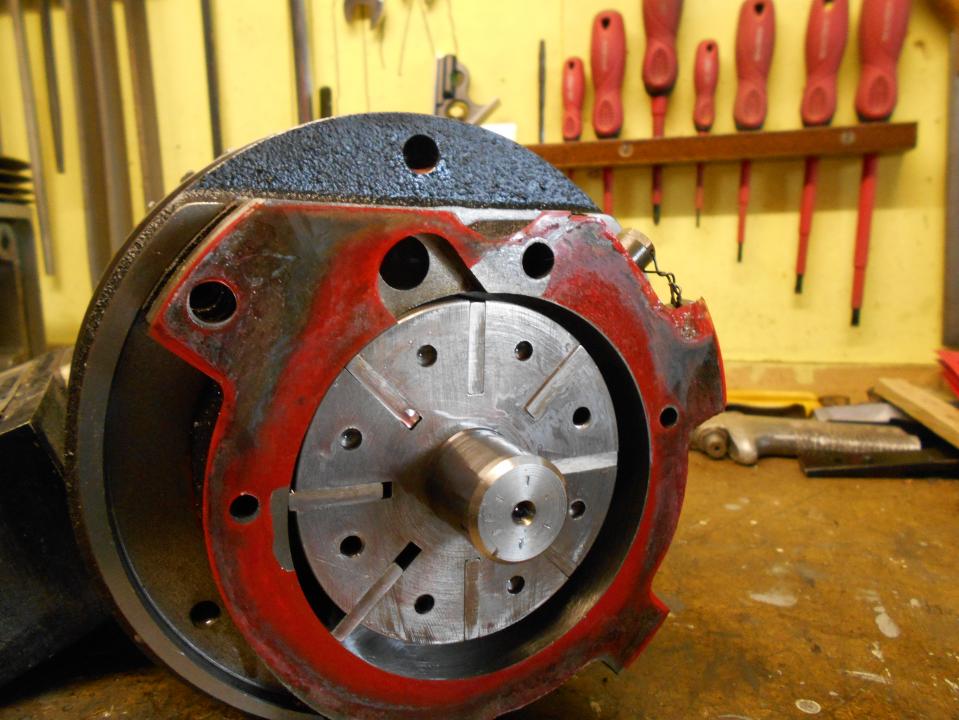
For a visual representation of how rotary vane compressors work, see here.
Watch Video about Rotary Vane Compressors
Applications of Rotary Vane Compressors
As one of the oldest types of gas compressors, the compressors have a wide range of applications. Their design produces less pulsations in the flow and therefore less noise. With newer design and manufacturing techniques, they work more efficiently now than their earlier ancestors, and where the pressure demand is within their range of application, they could be the best choice.
Rotary vane compressors are used in the agricultural industry to supply compressed air for applications such as operating farm equipment or planting. They can also be used for so many tasks in food and beverage industry such as product handling or air knives. The dry-cleaning industry also enjoys using rotary vane compressors to provide the compressed air they need for proper incorporation of chemicals they use during the dry cleaning.
Rotary vane compressors could be used anywhere that there are air-operated tools. All sorts of metal and wood working businesses such as automotive industry that use these compressors to supply compressed air for welding, cutting, etc. or furniture manufacturers benefit from rotary vane compressors.
Sliding vane compressors are also used in the energy sector in applications such as drilling rigs or turbine operation. They can also be used for vapor recovery, gas transfer, etc. as well as purging and cleaning equipment.
These types of compressors are also useful in pharmaceutical, medical, and dental applications. For instance, rotary vane compressors can be used to provide the compressed air used for accelerated drying in pharmaceutical industries. As an example of medical and dental applications of rotary vane compressors, they can be used for air-driven tools and devices such as breathing equipment and air-driven dental units that are used for drilling, cutting, or polishing of teeth.
Advantages and Disadvantages of Rotary Vane Compressors
The advantages of rotary vane compressors include:
- Simple design and not so many moving parts
- Versatile and efficient
- Relatively low initial costs
- Long life expectancy of as long as 100K hours
- Continuous air supply
- Easy on-site maintenance
- Very small amount of oil needed for lubrication
- Relatively compact size
The disadvantages of rotary vane compressors include:
- Some lubricant will enter the air; therefore, some air/lubricant separation is necessary
- Limited application for high pressure ratio demands
- Difficult and high-cost multi-staging
- Limited discharge pressure (up to 200 psig (1,378 kPag) for high pressure models)
- Not flexible to capacity control
Rotary Vane Compressors vs. Screw Compressors
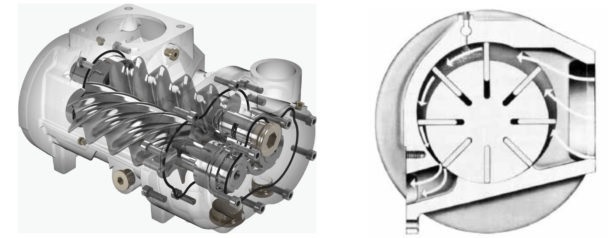
Rotary vane compressors came around a lot earlier than their screw counterparts. They are simpler in design and have almost double the life expectancy of screw compressors. Nonetheless, screw compressors dominate rotary vane compressors when it comes to capacity, energy efficiency, and turndown ratios. Let us look at their differences in further detail:
| Rotary Vane Compressors | Screw Compressors | |
| Pressure ratio | 8:1 | 20:1 |
| Discharge pressure | 200 psig (1,378 kPag) | 450 (3,103 kPag) |
| Oil | Low amounts required basically for lubrication | A lot of oil required for lubrication and cooling |
| Cooling | Air cooled | Oil cooled |
| Gas composition sensitivity | Can handle almost any gas | Not capable of handling sour gases |
| Turndown | 40 % up to 100 % | 15% up to 90% (100% with slide valves) |
| Delta P | No minimum delta P | At least 40 PSI delta P |
| Maintenance | On-site easy repair. low component wear. | Necessity for a complete change-out after a problem or even for maintenance. |
Read More on Linquip
- The 10 Best Air Compressor for Home Garage
- The 7 Best Air Compressors
- Types of Centrifugal Compressor: An Ultimate Guide
- How does an Air Conditioners Compressor Work?
- The 10 Highest CFM Air Compressors in 2021
- Axial Flow Compressors 101: The Essential Overview
- The Essential Guide to the Types of Air Compressors
- The Differences Between Rotary & Reciprocating Compressors

